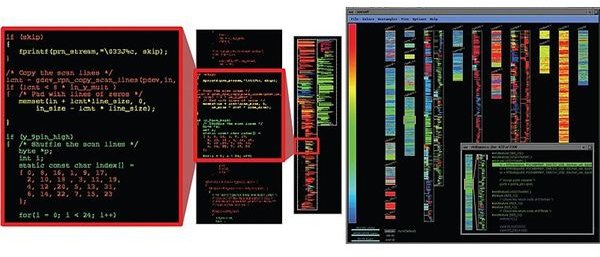Understanding Different Types of Software Testing
Software testing is important to developers and end users to make sure that applications that are put into use do what they are
supposed to accomplish and easily fit into the life of the user. Software that destroys data, crashes, and leaves the door open to attackers is not only bad for the end user, but it gives the developer a bad reputation and a cloudy future as a software developer.
Here we take a look at a few of the types of software testing that are commonly used to help produce outstanding, reliable software applications.
Image Credit: Wikimedia Commons/James J. Thomas and Kristin A. Cook (Ed.)
Black Box Software Testing
When software is evaluated solely upon what the program does without regard for its internal operation, the process is called a black box test. The only consideration is what the software is expected to do based on documented requirements and how well the software does it. If the software functions properly, it passes the test. If it does not, it gets sent back for rework in accordance with the work breakdown structure for software testing.
Glass Box Unit Software Testing
As suggested by its name, this type of software testing examines the internal operation of the software. if code is sloppy, poorly written, or has error handling problems, it can be rejected even if it produces results that comply with established requirements. Code statements, conditions, and branches are all evaluated to make sure that software has been created in keeping with best known design practices.
Modular Unit Testing
This type of software testing normally relies on the developer who receives modules from other developers or departments and needs to ensure that it meets specifications for the project at hand. This is typically a thorough test method that requires knowledge of the code to evaluate its performance.
To facilitate the unit testing of software, test platforms are often created into which the module is plugged in. This permits a systematic and automated mechanism to evaluate whether the code within the module performs according to specifications.
Security Testing
The modern connected world requires that all software be evaluated for security. Intrusion detection modules, authentication systems, stem logs, firewalls, and other safeguards against rogue operations must be tested thoroughly before a software package goes into operational.
To facilitate security testing, developers will often hire hackers for ethical purposes to search for exploits and identify ways to neutralize them. The failure to secure a software application properly can leave organizations open to tremendous liability, especially if confidential third party information becomes compromised.
Usability Testing
One of the most important types of software testing is that which evaluates it for usability. Developers and other insiders may be so familiar with the way the software works that they do not recognize glaring problems people might have when using it in the field. Recognizing this, software is often tested to see if it is user friendly by allowing a panel of users to try it out and rate the accessibility of its features as well as the quality of its own internal help system.
By processing a software application through usability testing, developers learn more about how ordinary users will attempt to use the program and can make the software more intuitive before it is deployed.
Alpha Testing
When software is approaching its final stages of development, a preliminary version is often distributed to in-house users so that real time feedback can be gained from the application’s actual use. At this stage, the software is nearing its released version, but glaring bugs and unexpected vulnerabilities are often discovered, helping developers to refine the product before it gains further exposure.
Beta Testing
The last of all the types of software testing is the beta stage of the development cycle. Some software vendors such as Google are known for their extensive beta testing periods during which the software undergoes a heightened state of monitoring during periods of routine use. A beta test is performed by a group of ordinary users in various environments to see if the software is ready for sale or for use in the enterprise. Although bugs and deficiencies are often discovered during beta testing, their number will be minimal if the software development process was well executed.
